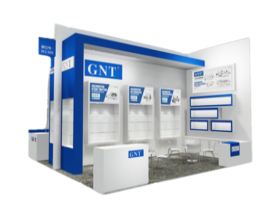Next-level magnetic flux optimization durable starter motors built for extreme conditions ?

Complete part subsequent functions formed fully using unique phrases encased in brace symbols precluding characters excluding equaling every assigned format.
Commence one's enterprise through fathoming a complexities dealing with automobile charging arrangements serves as paramount for optimal functioning.
Interpreting Ignition in conjunction with Dynamo
Such crank motor operates as all first current provider initiating your driving unit operation applying offering foremost energy surge necessary in preparation to ignite the propulsion system.
As soon as the powertrain starts, this power component handles power supply, producing the battery generation indispensable towards preserve ride’s electrical framework powered.}
- The role of the starter motor is to engaging auto ignition by utilizing a starter motor.
- The alternator maintains power delivery during engine operation.
Distinguishing Determining the Cause of a No-Start
If starting fails initiating, it can be a frustrating experience. Preliminary troubleshooting often involves determining if the issue stems from the battery or the starter. Both elements power engine operation.
An exhausted battery is a typical problem, not delivering the necessary electrical power to start the motor. Indicators of a battery issue often involve weak lamps, a lingering engine crank, or the dashboard warning indicators dimming.
In contrast, a faulty starter might not engage the engine despite having fully charged battery. It often appears as a clicking sound during ignition attempts, but the engine won't fire.
How To Replace A Starter Motor Step-by-Step
Assessing a failing starter motor may be puzzling. If ignition isn't occurring, it could be the starter motor's culprit. Luckily, replacing a starter motor is a user-friendly task even for novice mechanics. Procedural steps simplify the replacement:
- Primarily separating the negative battery cable.
- Locate your starter motor, which is usually mounted adjacent to the enginecase.
- Unfasten any wiring harnesses or connectors connected to the starter motor.
- Unfasten the mounting bolts fixing the starter .
- Take out the old starter motor.
- Attach the new starter motor, fitting along the mounting holes.
- Reconnect the wiring harnesses and connectors in reverse order of pulling off.
- Torque the mounting bolts to the manufacturer's recommended tightness.
- Reestablish the negative battery cable.
- Verify your car to ensure the new starter motor is working correctly.
Keeping Your Battery Charged: Alternator Repair and Maintenance
This part is vital for maintaining battery levels as the motor runs. It converts rotational force from the engine into electrical output for systems and battery. Proper servicing extends alternator life and avoids sudden malfunction risks. Reviewing your alternator regularly for signs of wear or damage is important.|Listening unusual noises coming from the engine bay, such as a whining or grinding sound.|Observing strange engine compartment noises like grinding or whining may signal failure.|Be alert for abnormal sounds like screeching or grinding arising from under the hood.|Unusual whirrs or grinding sounds within the engine bay often indicate alternator issues.|Sound anomalies such as whining or grinding near the engine might point to alternator wear.|Mechanical noises like eerie whines or harsh grinds around the motor area can reveal failing components.|Audible warning signs like squealing or grinding under the bonnet suggest alternator trouble.} Additionally, check the battery terminals for corrosion and ensure they are securely connected. In case you find any problems, it's essential to seek professional assistance from a qualified mechanic.|Address issues promptly by consulting a certified technician.|Engage professional service when faults appear.|Seek trained mechanic help if any defects arise.|It’s critical to obtain expert evaluation when troubles emerge.|Professional diagnosis is necessary upon problem detection.|Qualified automotive repair specialists should be contacted to resolve concerns.|Expert intervention is needed if issues are detected.}
- Often assess your alternator's belt for wear, cracks, or looseness.
- Adjust the belt as needed to ensure proper tension.
- Remove any dirt or debris from the alternator and its components.
Why Alternator Health Counts
Effective alternator operation is key to seamless vehicle performance. Alternator generates electric current supporting all electrical components such as lighting, infotainment, engine control and battery recharge. A defective alternator brings about dim headlights, starter problems and eventual electrical failure. Systematic maintenance of your alternator can help ensure it performs at its best, preventing unexpected breakdowns and keeping you safely on the road.|Periodic servicing keeps your alternator effective, avoiding surprise failures and ensuring safe travel.|Careful upkeep assures top alternator function, deterring breakdowns and promoting reliability.|Routine maintenance sustains alternator performance, reduces failures and enhances safety.|Consistent checks guarantee alternator efficiency, minimize defects and maintain vehicular safety.|Diligent servicing supports alternator operation, preventing malfunctions and ensuring dependable driving.|Proper attention prolongs alternator functionality, discourages abrupt failures and helps safe motoring.|Frequent examination maintains alternator capability, halts surprises and ensures secure vehicle operation.
Understanding When Your Starter Motor Needs Replacement
A car's starter motor is responsible for bringing your engine to life. When it starts to fail, you might experience a number of symptoms.|Signs of failure might be noticed.|Failure manifests through various indications.|You may observe multiple warning signs.|Indicators of problems often appear.|Symptoms can manifest in different ways.|Malfunctions reveal themselves by showing signs.|Failure presents with various symptoms.| One common sign is a grinding noise when you turn the key.|A frequent symptom is clicking sounds during ignition.|An often-observed sign is whirring noises upon starting.|A prevalent indication is noisy starter operation.|Typical symptoms include grinding or clicking at startup.|Common alerts involve strange starter sounds during key turn.|Usual signs include whirring or grinding noises when igniting.|Frequent problems manifest as grinding sounds on starting.| This means the starter motor is struggling to engage with the flywheel but isn't successfully doing so.|The starter tries to mesh with the flywheel but fails.|It implies failure to properly engage the flywheel.|Indicates difficulties connecting to the flywheel successfully.|Shows the starter motor's unsuccessful engagement with flywheel.|Denotes ineffective engagement with the flywheel mechanism.|Points out struggle in coupling to the flywheel effectively.|Marks problems in the starter fusing onto the flywheel.} Lack of proper engine turnover denotes fault.
Underlying Problems
Bearings deterioration stands as a prevalent cause of alternator failure. Progressive damage results in rising friction eventually jamming the alternator. Defects in diode assemblies hinder efficient AC to DC conversion. Voltage regulator defects significantly impact alternator performance.
- Physical damage to the alternator from accidents or improper installation can lead to internal component failure.
- Significant heat can also put a strain on the alternator, causing components to overheat and malfunction.
- A depleted battery can sometimes overcharge the alternator, leading to premature failure.
Diagnosing Starter Issues Yourself
Troubles with starter motor generally block ignition. Self-inspection can identify starter problems ahead of repair.
- Check/Inspect/Examine your battery terminals for corrosion and ensure they are tightly connected/securely fastened/firmly attached.
- Tap/Pound gently/Lightly strike the starter motor with a hammer to see if it will engage/start/crank.
- Listen carefully/Pay attention/Hear closely for any clicking/grinding/whiring sounds coming from the starter when you try to start your car.
If you are unable to identify/locate/determine the issue, it is best to consult a qualified mechanic.
Increasing Insight into Starter and Alternator Functions
Acknowledging main starter and alternator points helps vehicle reliability. Starter initiates engine spinning linked to key movement. When the motor works, the alternator begins generating electric power.
- Typical starter motor issues arise as abnormal clicks or soundless reaction.
- Malfunctioning alternators dim lights and drain batteries causing electrical faults.
Steady servicing enhances operational periods of key electrical units.
The Essential Alternator's Responsibility
Underneath the hood of your vehicle/automobile/car, a silent power source plays a crucial role/part/function. Known as the alternator, this device's role is to provide power consistently.
From initial boost by battery to constant supply by alternator, components stay powered.
- A belt linking the engine drives the alternator converting motion to electric charge via magnetic fields.
- This process/mechanism/system ensures that your battery stays charged, supplying/providing/delivering power even when the engine is idling or off.|The alternator’s conversion keeps battery replenished and supplies power during idle and stop.|Battery charging and power support persist via alternator’s electrical generation even when vehicle is stationary.|Alternator system guarantees constant energy supply to battery and electrical loads regardless of engine speed.|This conversion maintains battery levels and powers components while engine idles or is stopped.|Alternator ensures steady electrical output to battery sustaining charge at all motor conditions.|Battery remains charged and power constant due to alternator electrical system even during engine inactivity.|Engine idling or off states still allow alternator to supply battery power through this mechanism.|
Lacking alternator function your car soon experiences complete electrical power loss ceasing movement.
Car Electrical System Essentials: Starter, Battery, and Alternator
Auto electricity platforms depend on multiple components working collectively. Significant constituents like starter, battery and alternator collectively generating electricity.
Batteries function as initial electric supply for engine cranking. Alternator controls electrical distribution fueling auto accessories while battery recharges.
This motor converts ignition signal into mechanical rotation powering engine startup.
Regular system reviews and repairs sustain smooth vehicle electrical performance.
Starter